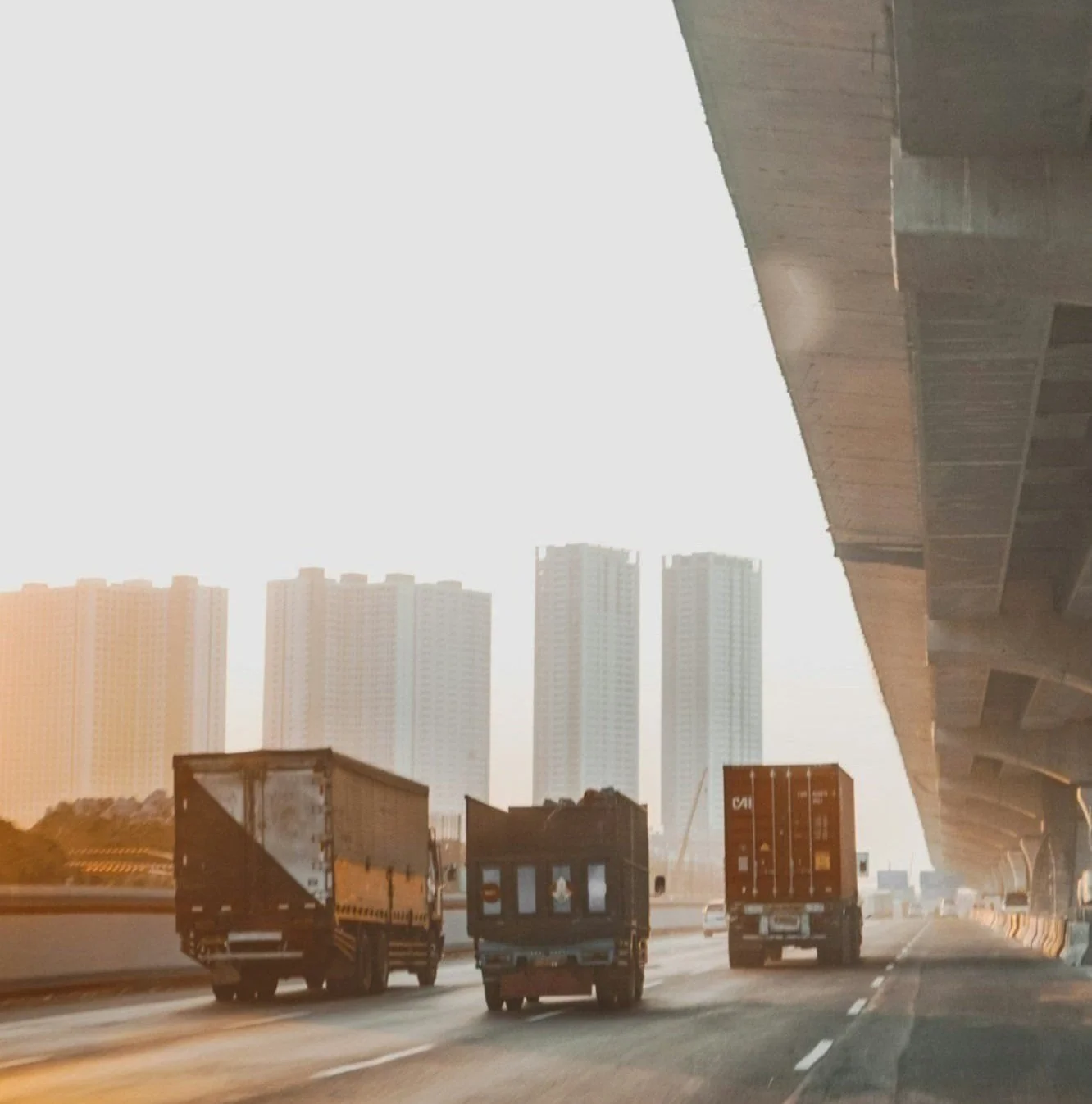
Our Mission: Reduce Emissions
In 2015, as part of the 'Paris Agreement', a promise was made to cut EU CO2 emissions by 40% from 1990 levels by 2030 and by 60% for all greenhouse gases by 2050. After the UK left the EU, it set an even higher goal of reducing emissions by 100% by 2050. If we then take a dive into the sources of the UK’s present emissions, we find 'Domestic Transport' is the largest contributing sector, making up 29% of the total.
Heavy-goods vehicles or HGVs, make up just 1.3% of all road transport, yet they accounted for 17.9% of road emissions in 2014, rising to 18.5% by 2023. This increase isn’t surprising, as growing demand for goods transport has led haulage companies to use larger vehicles and cover longer distances. With fuel efficiency improvements lagging behind, the EU predicts their CO2 emissions from diesel HGVs will rise from 25% to 45% by 2030. If the UK follows suit, emissions could climb even higher unless significant changes are made.
Which part of the trailer should we focus on for aerodynamic tuning? Studies show that the tractor accounts for 40% of aerodynamic drag, while the trailer contributes the remaining 60%. Research from the International Council on Clean Transportation (ICCT) supports these findings, emphasising the significant potential of “trailer aerodynamics” - particularly improvements to the rear of the trailer.
This is where Aeroflow comes in; we are eager to take meaningful steps forward to effectively tackle this pressing issue. We are committed to producing innovative aerodynamic trailers that help you reimagine the outdated boxiness of traditional past trailers. Our goal is to build a trailer for the future that not only seamlessly integrates with current operations but paves the way for a more sustainable transportation landscape.
If we break this down further we find the large emissions of the transport sector are a result of poor improvements to vehicles and infrastructure, between 1990 and 2023, these total emissions have only reduced by 14%. Whilst other sectors such as fuel supply or electricity supply have reduced their emissions by 60% and 78%, respectively. This slow progress could be attributed a multitude of factors, such as an increase in vehicle numbers. However, it truly highlights the need for more aggressive policies, greater investment in sustainable transport infrastructure and improving the fuel efficiency standards.
At motorway speeds, HGVs use the majority of their engine power overcoming aerodynamic drag. Enhancing aerodynamics can therefore play a crucial role in cutting fuel consumption, particularly on the long journeys typical of haulage operations. Streamlined designs and innovative aerodynamic solutions enhance fuel efficiency, leading to greater cost savings, increased range, and lower emissions. Overall, the beauty of aerodynamics is that it’s fuel agnostic, so regardless of whether a fleet runs on diesel, electric, hydrogen, or hydrotreated vegetable oil, aerodynamics will be part of the solution.

Our Mission: Reduce Emissions
In 2015, as part of the 'Paris Agreement', a promise was made to cut EU CO2 emissions by 40% from 1990 levels by 2030 and by 60% for all greenhouse gases by 2050. After the UK left the EU, it set an even higher goal of reducing emissions by 100% by 2050. If we then take a dive into the sources of the UK’s present emissions, we find 'Domestic Transport' is the largest contributing sector, making up 29% of the total.
Heavy-goods vehicles or HGVs, make up just 1.3% of all road transport, yet they accounted for 17.9% of road emissions in 2014, rising to 18.5% by 2023. This increase isn’t surprising, as growing demand for goods transport has led haulage companies to use larger vehicles and cover longer distances. With fuel efficiency improvements lagging behind, the EU predicts their CO2 emissions from diesel HGVs will rise from 25% to 45% by 2030. If the UK follows suit, emissions could climb even higher unless significant changes are made.
Which part of the trailer should we focus on for aerodynamic tuning? Studies show that the tractor accounts for 40% of aerodynamic drag, while the trailer contributes the remaining 60%. Research from the International Council on Clean Transportation (ICCT) supports these findings, emphasising the significant potential of “trailer aerodynamics” - particularly improvements to the rear of the trailer.
This is where Aeroflow comes in; we are eager to take meaningful steps forward to effectively tackle this pressing issue. We are committed to producing innovative aerodynamic trailers that help you reimagine the outdated boxiness of traditional past trailers. Our goal is to build a trailer for the future that not only seamlessly integrates with current operations but paves the way for a more sustainable transportation landscape.
If we break this down further we find the large emissions of the transport sector are a result of poor improvements to vehicles and infrastructure, between 1990 and 2023, these total emissions have only reduced by 14%. Whilst other sectors such as fuel supply or electricity supply have reduced their emissions by 60% and 78%, respectively. This slow progress could be attributed a multitude of factors, such as an increase in vehicle numbers. However, it truly highlights the need for more aggressive policies, greater investment in sustainable transport infrastructure and improving the fuel efficiency standards.
At motorway speeds, HGVs use the majority of their engine power overcoming aerodynamic drag. Enhancing aerodynamics can therefore play a crucial role in cutting fuel consumption, particularly on the long journeys typical of haulage operations. Streamlined designs and innovative aerodynamic solutions enhance fuel efficiency, leading to greater cost savings, increased range, and lower emissions. Overall, the beauty of aerodynamics is that it’s fuel agnostic, so regardless of whether a fleet runs on diesel, electric, hydrogen, or hydrotreated vegetable oil, aerodynamics will be part of the solution.


